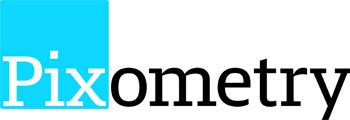
Q: What is the impact of using poor quality images on a website?
A:
An image is a guiding light to readers, drawing them to engage with thoughtfully written content, to explore the website and additional stories and share these across the various platforms.Images set the tone for the viewer and influence the perception of the page and website content. High quality, standout images increase user engagement and recall, making them an essential element of a publisher’s content strategy.
It’s often said that the average reader doesn’t see quality. However, we can all subconsciously tell when there’s something wrong with a photo. Whether it be too dark, lacking contrast, being dull and flat or simply something that jars with our natural perception of the image. Readers pay attention to images.
Using poor quality photos to support any content hinders the overall user experience and perception of the content and brand. After spending hours crafting a story, a bad quality image won’t effectively engage the readership in a way that the content deserves.
What makes an image ‘poor quality’? Visually, of course, it’s easy to see; grainy, noisy, blocky areas stand out while darker imagery appears as nondescript blocks of colour. There are also technical attributes to consider. Both file format and file size can have unintended consequences to the visual and operational quality of the content and site as a whole.
A punchy, good quality image propels the story, garnering interest in the content before the viewer even starts to read. It conveys a sense of pride from the publisher in their content and across the titles and can quickly differentiate the content from other providers.
Q: How should digital teams change the way they handle pictures?
A:
Essentially, the digital teams can quickly, and seamlessly, improve image quality with little impact to their current workflow processes.With the latest software, it takes seconds to transform a dull image to something that jumps off the screen, grabbing readers’ attention and drawing them to the story. Most importantly, this can all be done without the need for any specialist imaging skills or training.
It is worth noting that many publishers have established image optimisation solutions for their print publications. However, it is not always the case that these solutions are easily accessible, or even known to be available, to their digital teams. Raising awareness of the technology, its ease of use and its positive impact is a key factor to improving image quality. The digital teams are more focused on content creation and timely posting so the demand for improved image quality is a relatively new requirement.
Ultimately, the teams can embrace the power of image optimisation and continue to do what they do best, creating great content.
Q: What are the most common problems with images on publishers’ websites?
A:
Clearly, a lot of images used in conjunction with stories are sourced and uploaded without the time, or perhaps awareness, to make the photos look better.As mentioned above, there are two categories that image quality can be divided into; visual and technical. Both variants have their own impact to the reader’s experience and, addressed correctly, can vastly improve attraction, readership and conversion.
Visual problems are typically obvious and stand out – for the wrong reasons. Images that are dark, fuzzy, murky, without much detail do nothing to promote readership. Additionally, there’s an argument for how advertisers see the product if the images are not powerful.
Technical problems can be more impactful than visual issues. A poor choice of file format can deliver unintended results in terms of reduced image quality even if the original is perfect. Inappropriate file sizes can drastically impact the loading times and scoring algorithms in the major search engines’ ranking factors.
These challenges can be successfully, and easily, overcome with good image optimisation practices and software.
Q: What is the best way of integrating image optimisation processes into a publisher workflow?
A:
There are a number of simple ways to integrate image optimisation into the current publishing workflow.The most effective approach is to implement an image optimisation solution directly with the existing editorial / CMS production system. This is transparent to the overall production process and, most importantly, typically requires little end user training so the benefits are almost immediate. Additionally, implementing the software into the photoshop department to assist with the workload enables the team to focus on the more creative side of their craft, resulting in higher quality images overall.
Another successful approach is to deploy the image optimisation as a stand-alone system, albeit still part of the content publishing workflow, enabling more skilled operators greater flexibility with the controls and results.
Either option provides for an elegant solution to work on digital and print images, each with their different requirements, in a fast and managed process.
Q: What are the hallmarks of a good picture?
A:
A good picture is a Call To Action (CTA) for its accompanying content, encouraging the viewer to explore more.What makes a truly great image is its composition and content. The best images capture a moment frozen in time, taking the viewer on a journey and enabling a connection on an emotional and visceral level.
However, from a technical perspective, a good image is sharp, with excellent clarity and resolution. It contains a broad tonal range with bright vivid colours, contrast and definition. These variables make the image stand out wherever it’s seen, capturing attention and drawing the viewer in to its associated content.
Adding a third dimension to this is metadata and image SEO. An unspoken function in what makes a ‘good picture’ for publishers is its potential to appear higher in search results. Attaching appropriate keywords to the filename significantly improves SEO for the major search engines and adding metadata to the images should be an established procedure.
Q: Can publishers assume that AI-generated images are ready to go?
A:
While the results of AI generated images are certainly stunning, the images are not ‘ready to go’ for any publishing medium. AI images are created with only content in mind and in a controlled environment with no appreciation for how or where the image will be displayed and the inherent limitations.Take, for example, the Midjourney created image at the top of the article. As we’ve come to expect, the original is quite remarkable in its realism. However, without the additional optimisation the image doesn’t fulfil its potential as can be seen by the image on the right. Enhancing the image specifically for the digital environment introduces much more depth, reveals more details and colours are made more vivid and eye catching.
Which version caught your eye as you scrolled down? Image optimisation for any image whether AI generated or traditionally shot, is easy to implement and the result speaks for itself.
Q: What’s in the pipeline from Pixometry?
A:
Pixometry is continuing to support publishers around the world with their evolving image optimisation challenges. There’s ongoing development of the core engine for image optimisation with a key focus on powerful new tools for digital image use and addressing the inherent quality issues when repurposing social media images.Adding to the success of automatic background removal for images, Pixometry is working with a number of AI technologies that will dramatically expand the capabilities of image optimisation in the service.
Furthermore, new business models will offer image optimisation services to a broader range of publishers, enabling everyone to maximise their image quality for any type of content.

About us
A single image has the ability to tell a compelling story, to make a powerful argument, and to capture a split second of life that will evoke memories for years to come. Exceptional imaging runs through our veins at Pixometry.
There are many reasons to love Pixometry; from the dedicated team of developers that focus solely on expanding the definition of image optimisation to the ease with which the technology can be implemented, Pixometry is all about the image.
Whether the image is displayed proudly in print or to be leisurely digested online, Pixometry’s technology enables the world’s content producers to deliver beautiful, attractive images automatically and in seconds.










